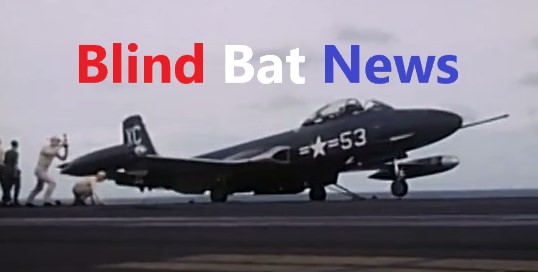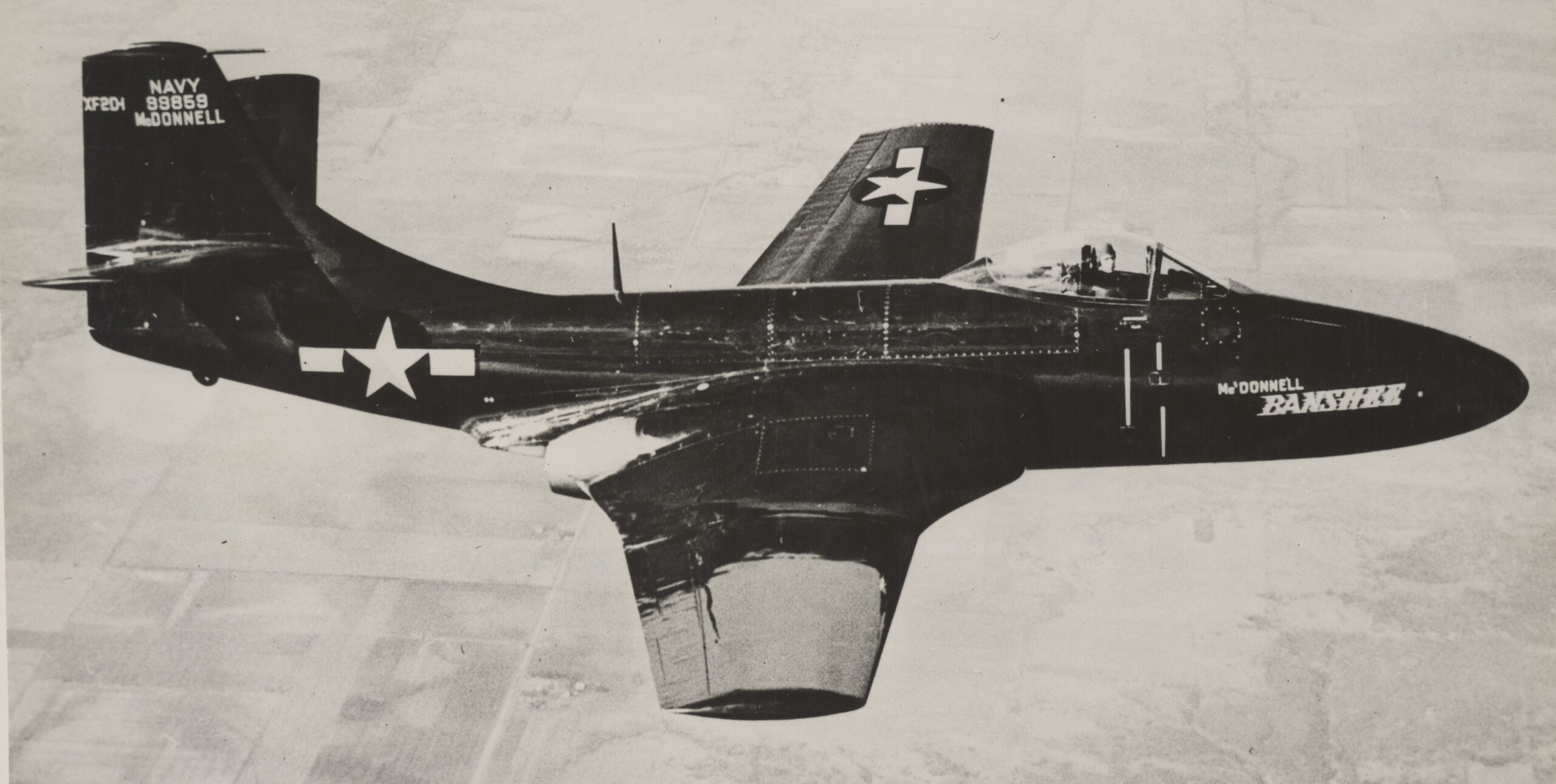
Prototype XF2D-1 Banshee, possibly on its first flight on 11JAN1947.
Cold War: Approximately 1947 (due to U.S. President Harry Truman’s Truman Doctrine) to 1991 (Operation Desert Storm, collapse of Soviet Union).
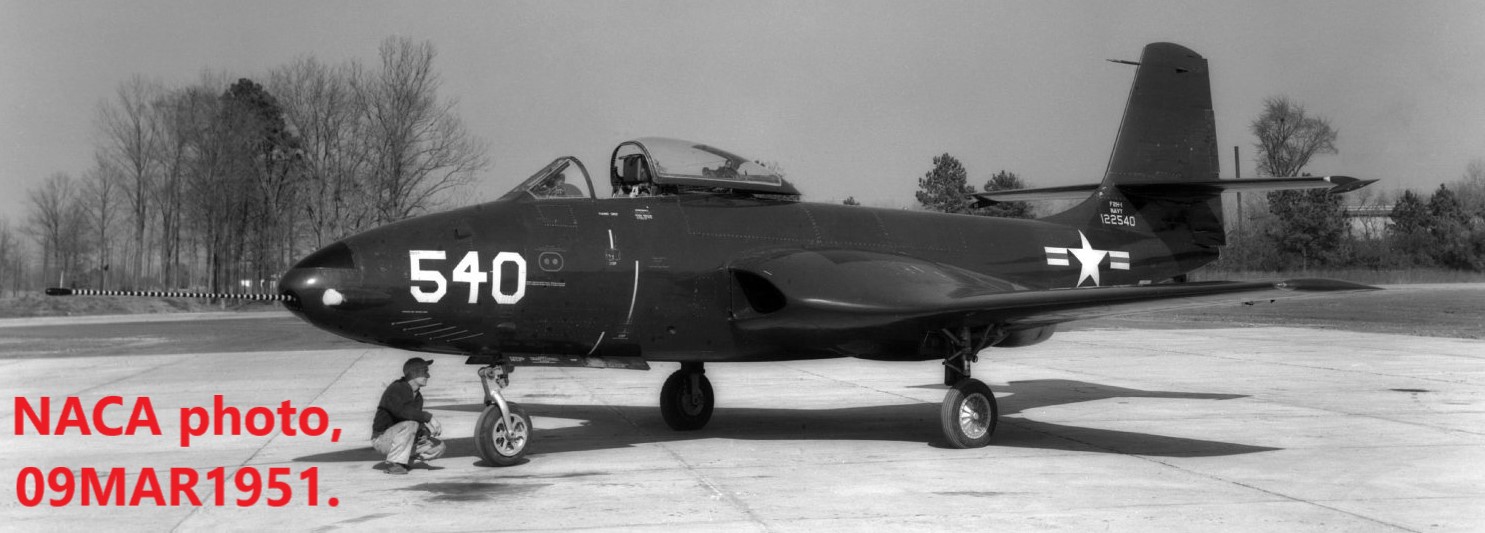
This F2H-1 Banshee was ‘written-off’ after a crash landing on 12JUL1951.
Production Banshees were powered by two axial flow Westinghouse J34 turbines. The J34 was also known as the X24, its development was started in 1944.
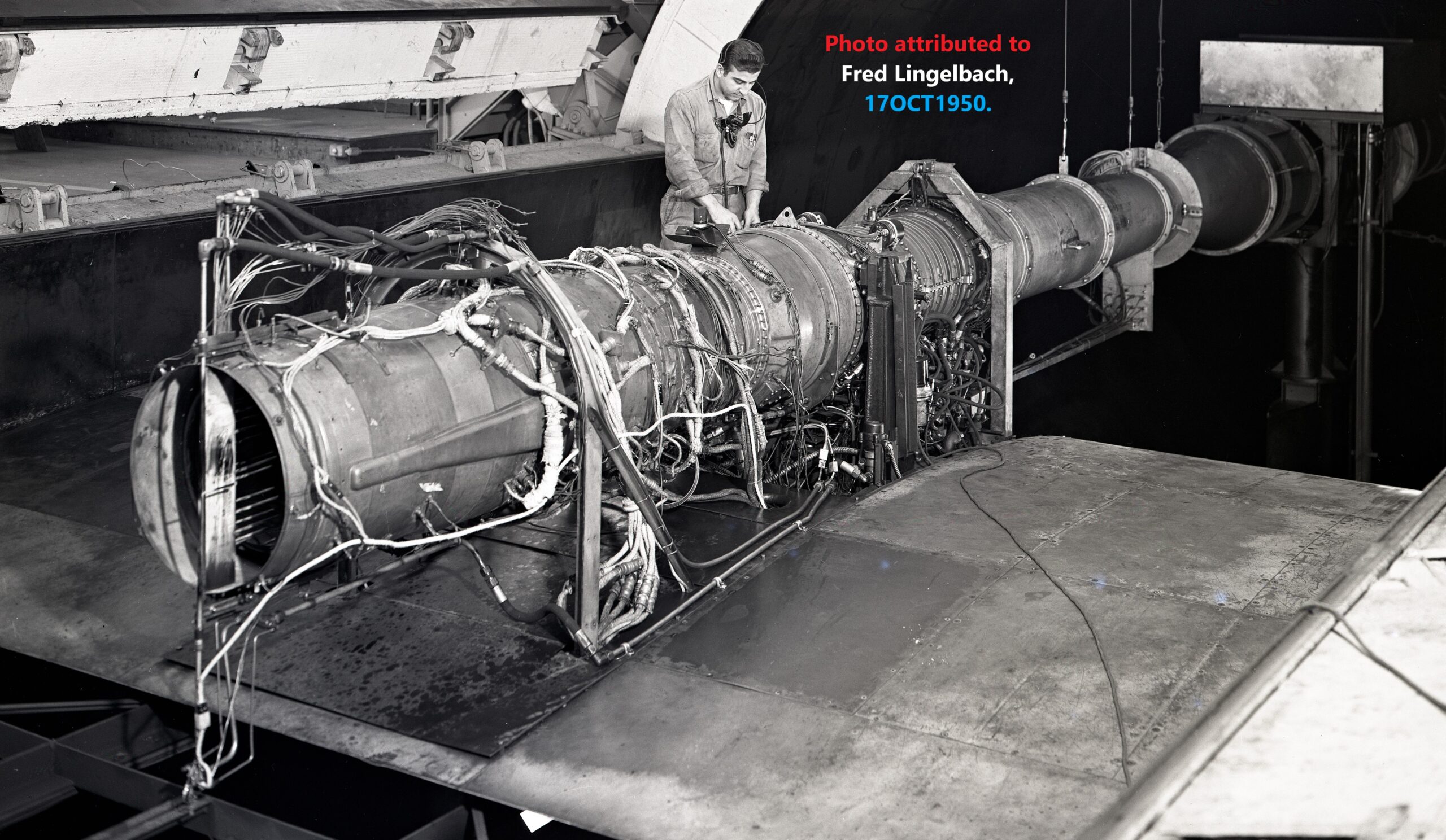
Westinghouse 24C-8 (J34) with afterburner.
One aircraft was tested with afterburners, which burned the aft end of the test aircraft, hence why afterburners were not used on other Banshees.
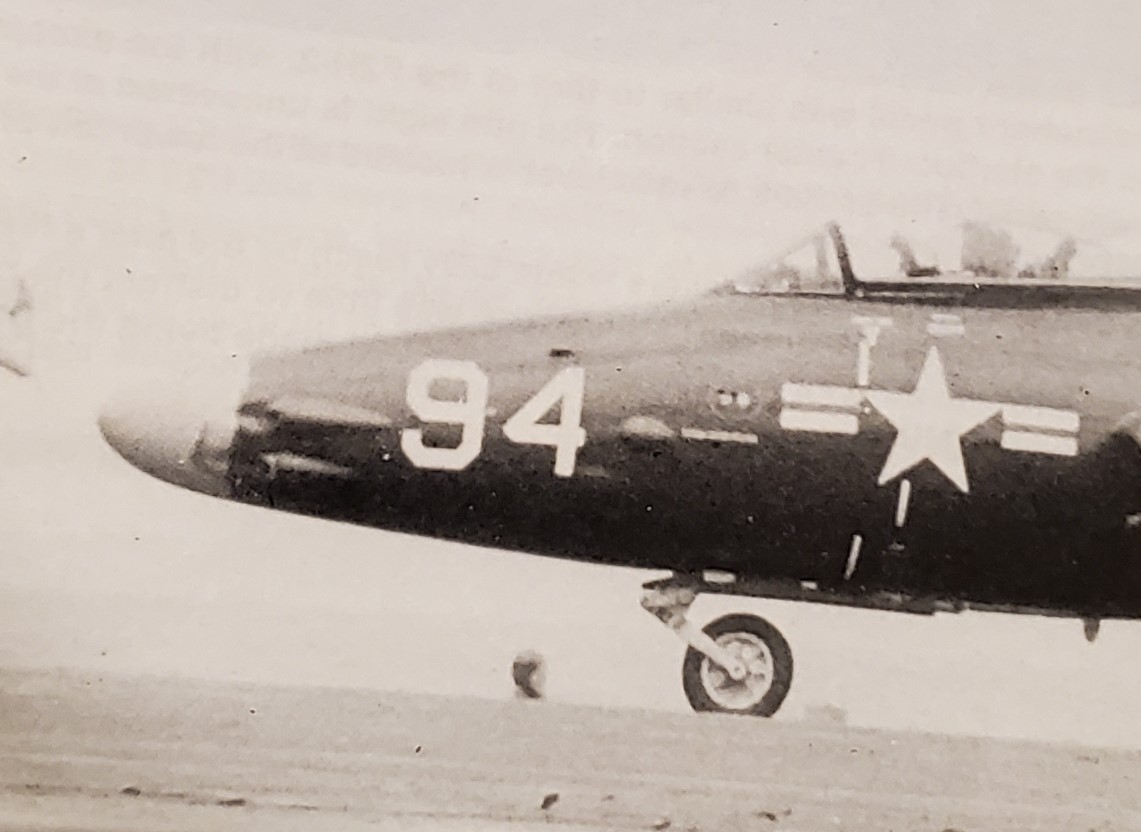
In this photo of a -2N you can see that the 20mm guns were moved vertical of each other, to make room for a track/search radar.
The F2H-2N had a redesigned nose, longer with repositioned guns to accommodate a large radar for night fighter operations. The F2H-1/2 had a small gun aiming/ranging radar, the dialectic panel being visible on the upper tip of the nose with the 20-millimeter (mm) guns mounted horizontal to each other. The F2H-2 could also carry up to 2-thousand pounds of bombs.
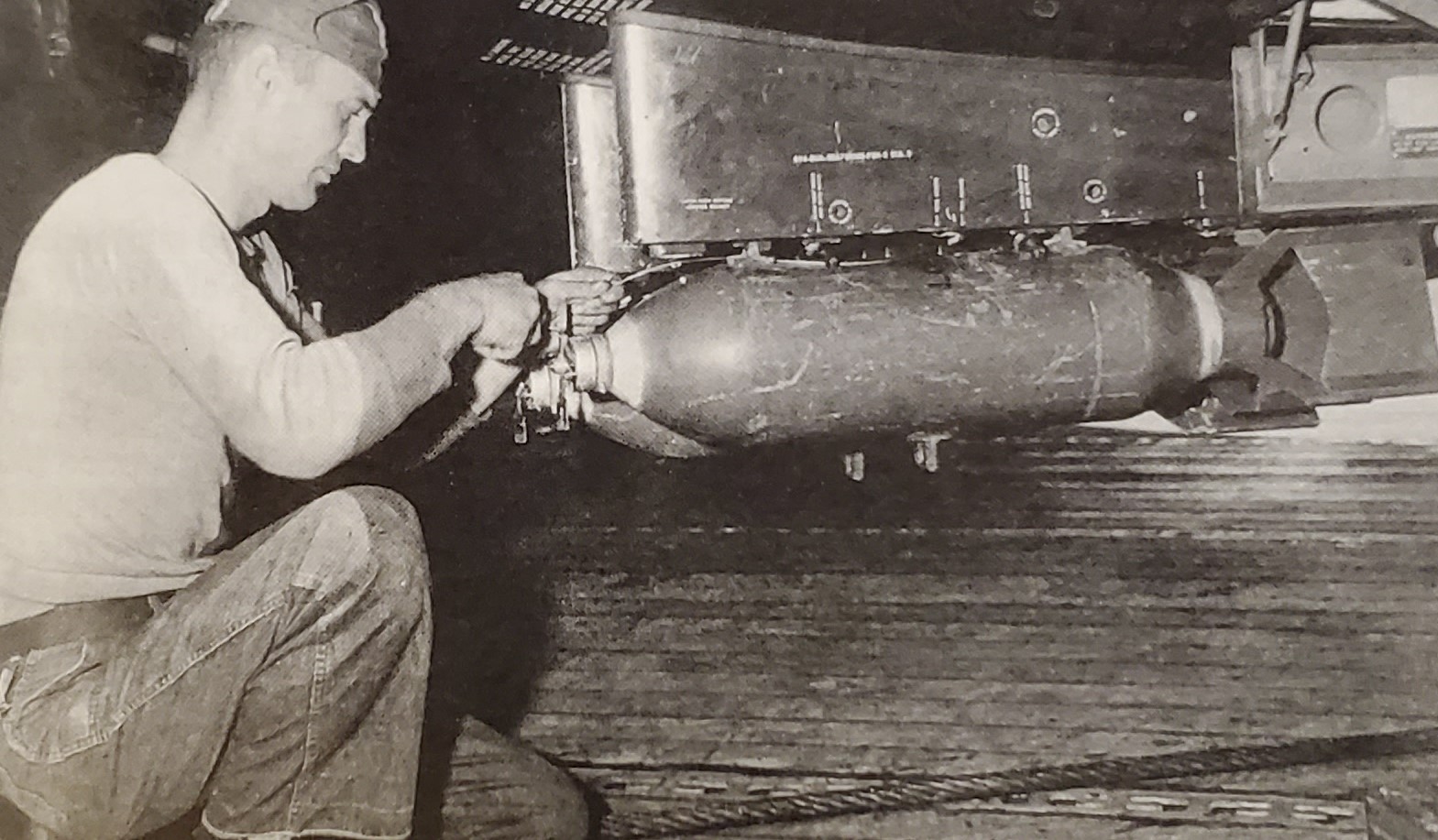
Inboard bomb racks, inboard of the main landing gear wells.
The -2 Banshee had four weapons racks, outboard wing racks were for rockets only, the inboard racks were for bombs or rockets.
I edited this silent U.S. Marine Corps (USMC) film to show the use of the F2H-2 Banshee in Close Air Support (CAS) training, date and location not given:
I edited this silent film which shows USMC F2H-2 landing mishaps of VMF-122 & VMF-224 onboard the United States Ship (USS) Coral Sea (CV/CVA/CVB-43) during March 1951 (according to the info that came with the film). The first incident shows a Banshee approaching the carrier, the camera cuts out (Navy edited out?), then you see the tail of the plane sinking in the water, a helicopter rescues the pilot who ‘walks-it-off’ once on deck. The second incident shows a Banshee tangled in a barrier:
The USN says the first combat use of the Banshee was on 23AUG1951, when F2H-2s launched from USS Essex (CV/CVA/CVS-9) against Korea. The Banshee proved to have better high altitude performance than the Grumman F9F Panther, yet never had the chance to engage in dog-fights with North Korean fighters. Battle damage to Banshees was the result of ground launched anti-aircraft fire.
On 16SEP1951, a McDonnell F2H-2 Banshee crashed while attempting to land on the USS Essex (CV/CVA/CVS-9) while sailing the Sea of Japan (near Korea). It missed the arrestor barrier and plowed into four parked aircraft (two Banshees and two Grumman F9F Panthers). Seven people reported killed. This crash is blamed for the adoption of the angled flight deck on aircraft carriers. I edited this from a silent USN film, if you look close at the slo-mo scene, where the Banshee misses the cable and then hops over the barrier, you can see what appears to be battle damage to its port aileron:
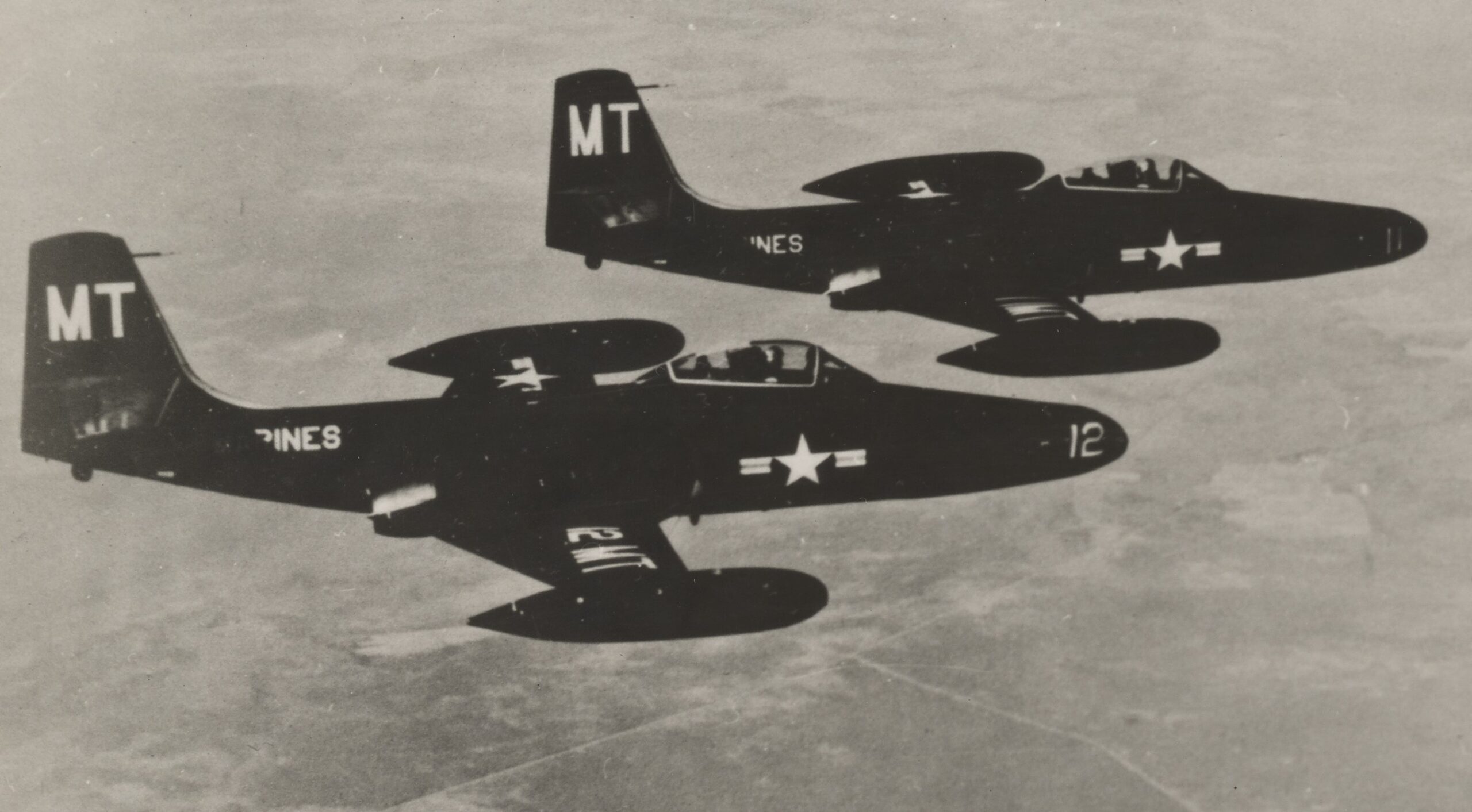
Two U.S. Marine Corps photo-recon Banshees of VMJ-2. Date/location not given.
The F2H-2P photo-recon Banshee used various types of cameras, such as the Fairchild K17, K18 and K38, with various size lenses.
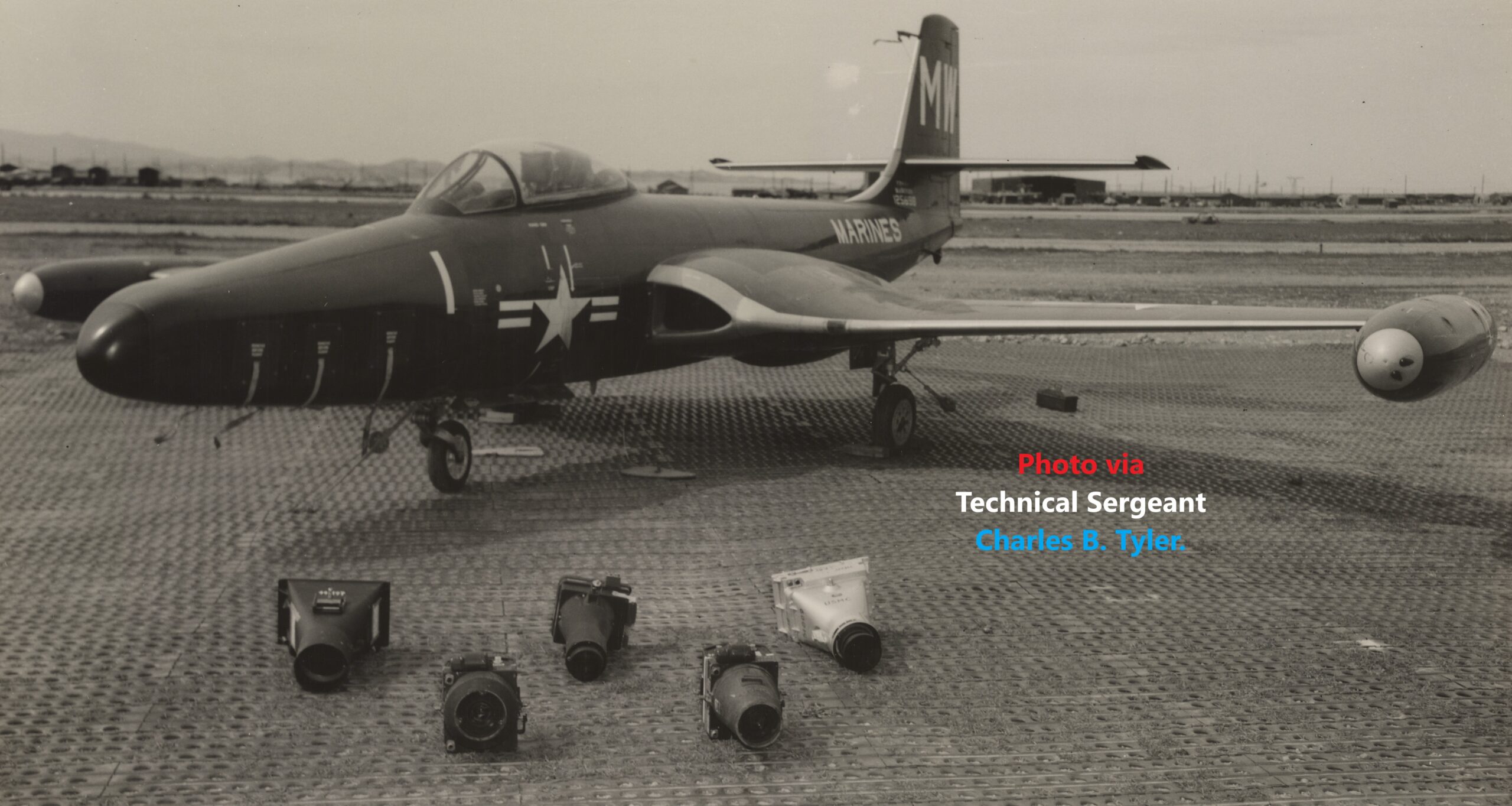
F2H-2P recon Banshee, date and location not given.
Sometimes called Operation Long Step, sometimes Exercise Long Step, North Atlantic Treaty Organization’s (NATO) wargame took place in The Mediterranean Sea, near Sardinia, in November 1952. I edited silent USN film to show the F2H-2 Banshee operations onboard USS Franklin Delano Roosevelt (FDR, CVA-42) during the wargame:
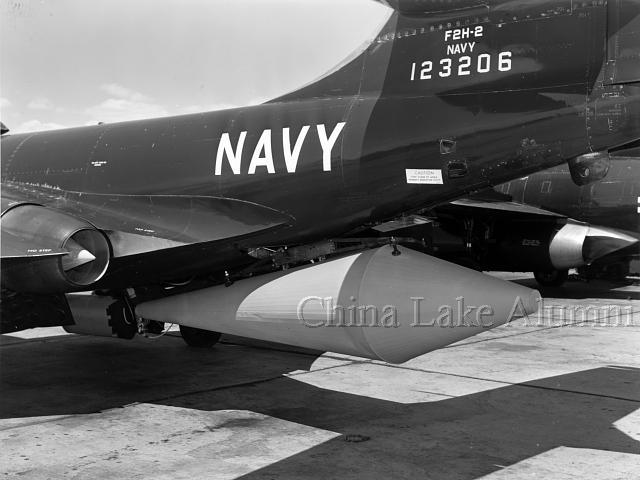
F2H-2 Banshee hauling tow target, Naval Air Weapons Station China Lake, California. USN photo, 07MAY1953.
F2H-3 (F-2C) Banshees began production in 1952.
The F2H-2B (B for bomber [nuclear]) and the F2H-3/4 (F-2C/D) were capable of carrying tactical nuclear bombs, the stronger wing allowed for a bomb load of more than 3-thousand pounds. Sometimes, when the -3 was equipped with nukes it was referred to as the -3B, but apparently that was never an official designation as the -3/4 was already nuclear bomber capable out-of-the-factory.
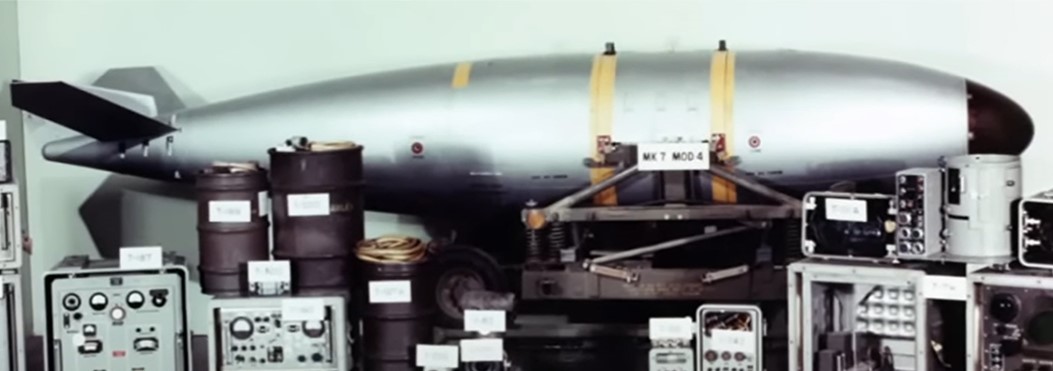
The so-called Thor Mark-7 (aka Mk7 Special Weapon) nuclear bomb is considered to be the first tactical nuke, but had to be delivered by ‘tossing’ it off the aircraft.
I edited this silent USN film showing a bare-metal VX-3 F2H-3 Banshee carrying the Thor, onboard the USS Midway (CVA-41/CVB-41). The film came with no date/location, but I was able to date/locate the film according to the F2H-3 aircraft (VF-31 Tomcatters) onboard the USS Midway; CVA-41 carried -3 Banshees from January through August 1954, while on a cruise of The Mediterranean Sea:
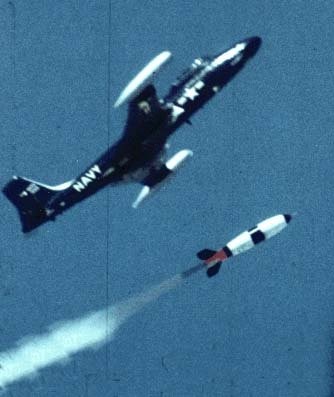
F2H-3 toss launches BOAR, sometime in 1955.
The Mark-7 was radically modified with a rocket motor (among other things) to assist with ‘tossing’. A non-armed rocket powered Thor was tested by an F2H-3, over China Lake, California, in 1955. The rocket powered ‘Thor’ was officially known as the Bureau of Ordnance Atomic Rocket, or BOAR (aka Bombardment Aircraft Rocket, BoAR).
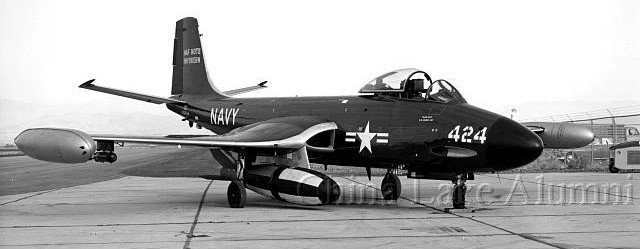
F2H-3 Banshee with BOAR. USN photo, 04NOV1953.
When in-service the BOAR was known as ‘30.5 inch rocket Mark-1’.
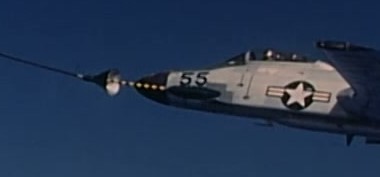
VX-3 dash-3 Banshee refuels somewhere over New Jersey.
To bolt on the In Flight Refueling (IFR) probe the upper port-side 20mm gun was removed. The combined IFR capabilities and increased internal fuel capacity made the Banshee-3 the longest ranged USN jet aircraft for that time.
I edit this from silent USN film (dated 28NOV1955) which demonstrates the ‘bolt-on’ IFR probe on the F2H-3 (F-2C). The ‘K’ tail code indicates a Reserve Banshee based on Naval Air Station Olathe (now the New Century AirCenter), Kansas. The fuel was provided by the North American AJ-2 Savage of VC-5/VAH-5:
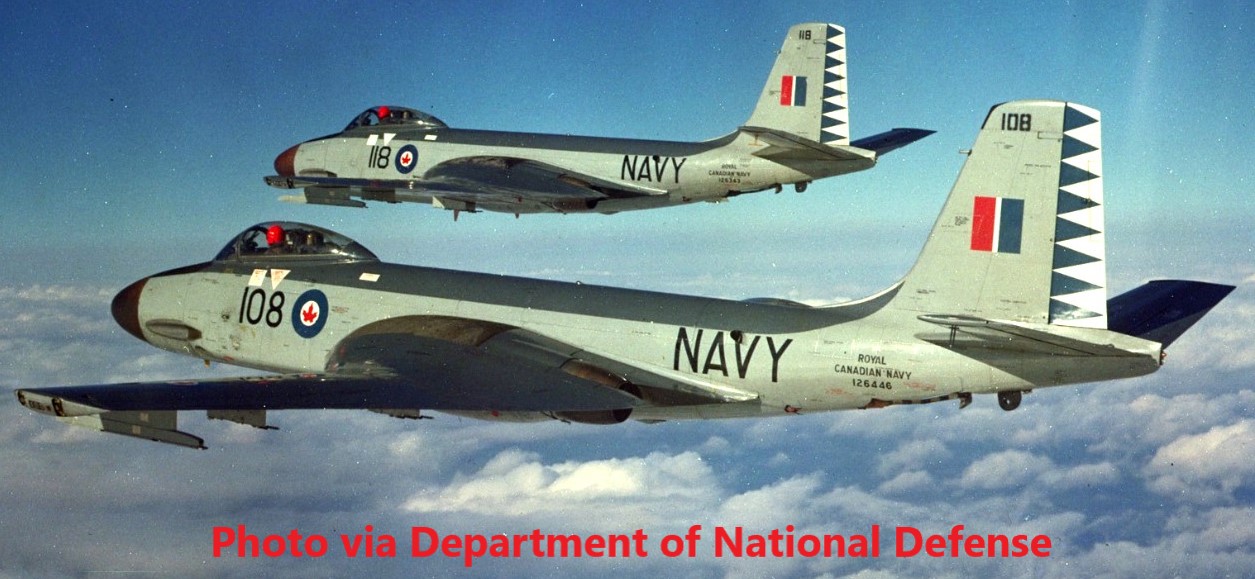
In 1955, the Royal Canadian Navy began using F2H-3s. They also armed them with the AIM-9 Sidewinder air-to-air missile, by modifying the outboard rocket pylons. According to a Canadian government website, the F2H-3 was their only Sidewinder armed naval aircraft until the advent of the CF-18 Hornet.

In 1956, the National Advisory Committee for Aeronautics (NACA) used the F2H-2B to test what it called hypersonic missiles.
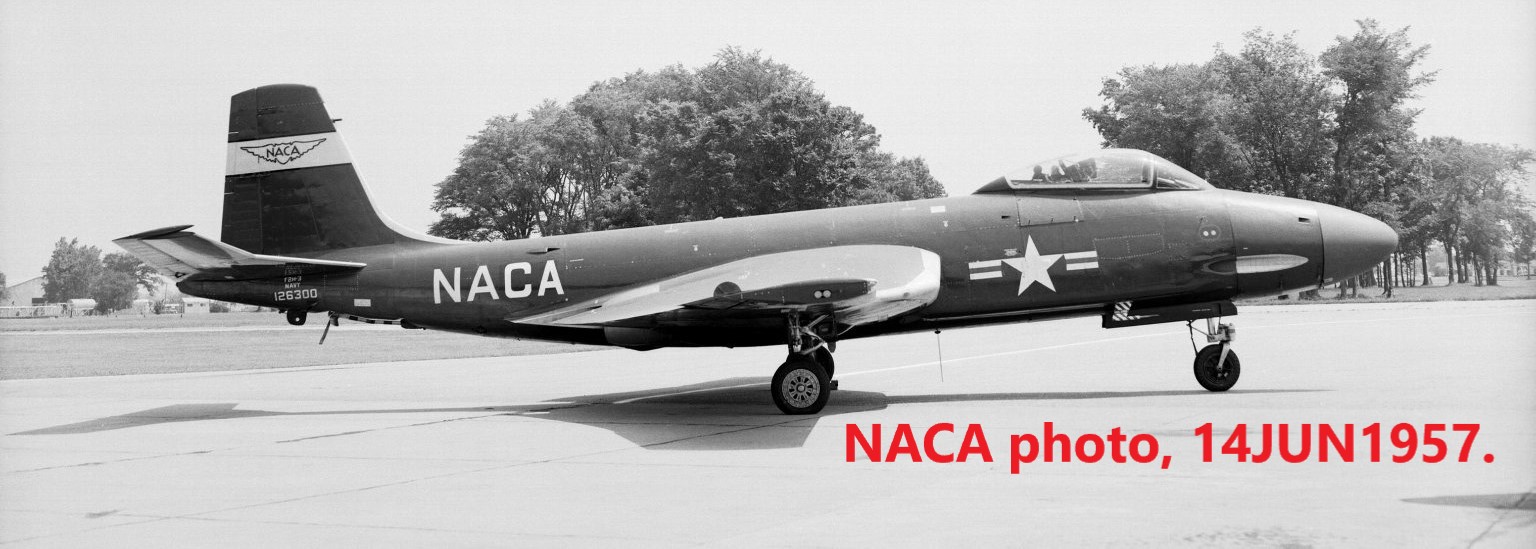
NACA operated F2H-3.
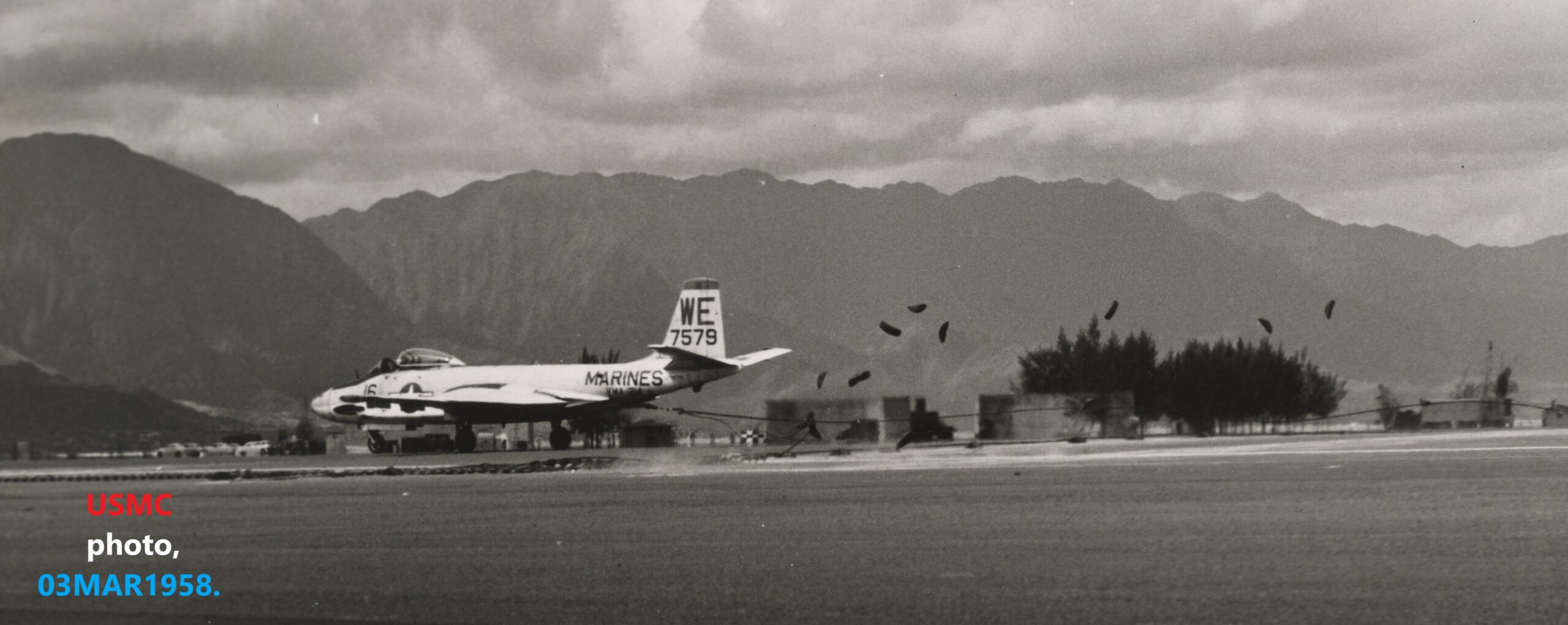
In 1958, on MCAS Kāneʻohe Bay, Hawaii, a new emergency runway arrestor system was tested by a ‘Black Sheep’ F2H-3. The Banshee caught the cable at 60 knots (69 miles per hour).
Supposedly, there was no visual difference between the dash-3 and dash-4 Banshees. The F2H-4 (F-2D) had a better radar and more powerful turbines.
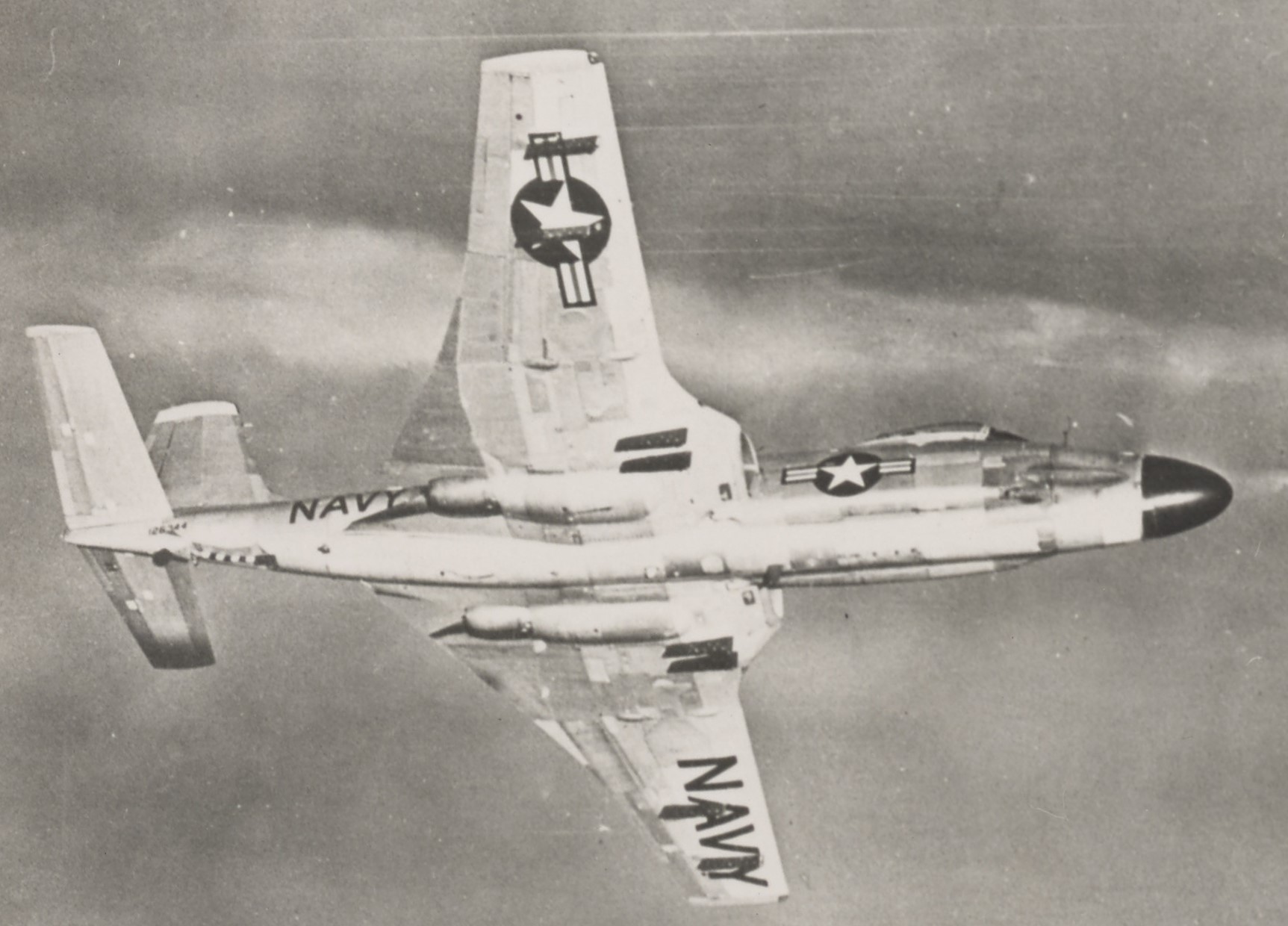
U.S. Navy photo claiming to depict a F2H-4 Banshee.
Dash-3/4 Banshees were updated with ‘horsal’ extensions on their leading edge of the horizontal stabilizers, to stop tail flutter.
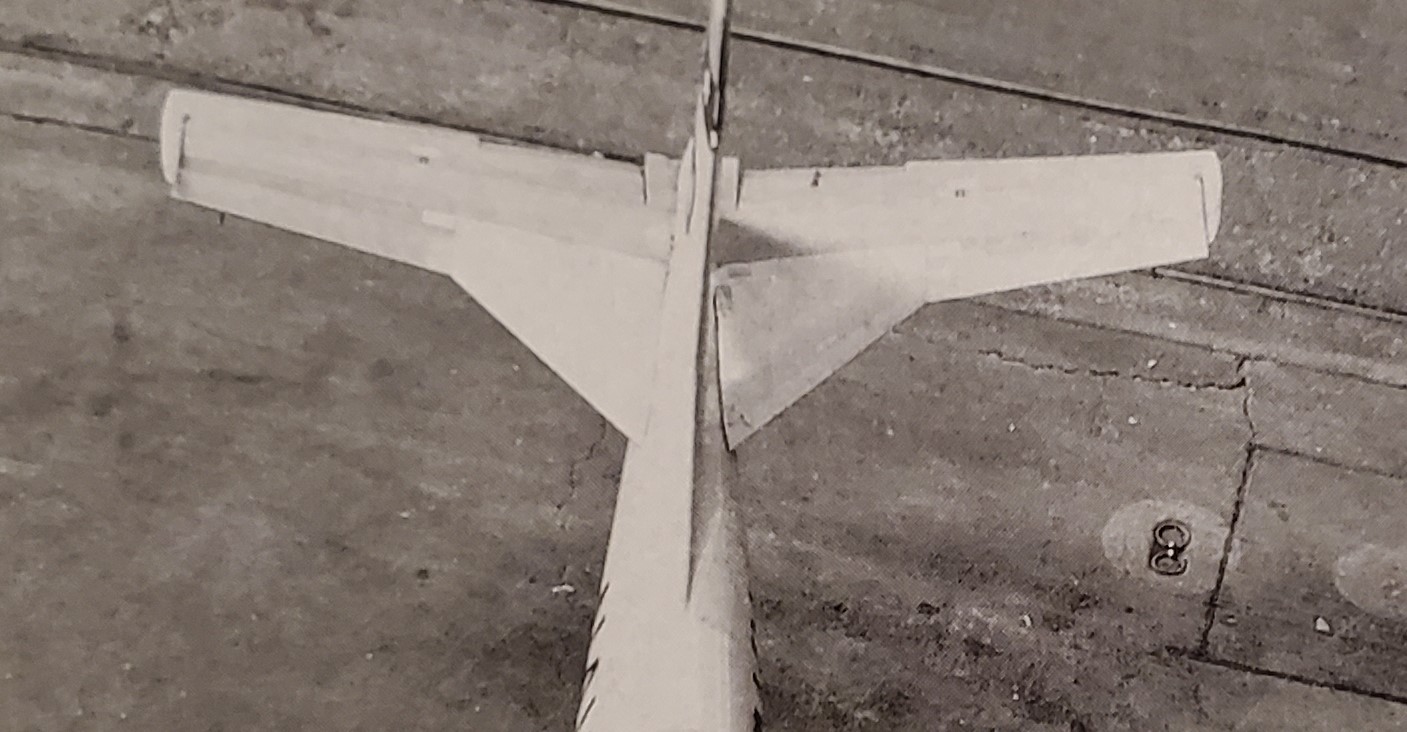
So-called horsal extension, to stop tail flutter.
According to a 1968 Naval Institute publication, pilots of the Banshee nicknamed the plane ‘Banjo’, but there is no explanation as to why (there is a lot of text missing from the original article).
Cold War: 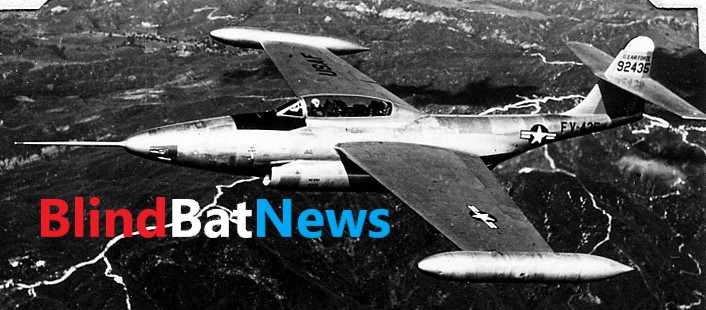 F-89 Scorpion, 1950s interceptor still in use?
F-89 Scorpion, 1950s interceptor still in use?
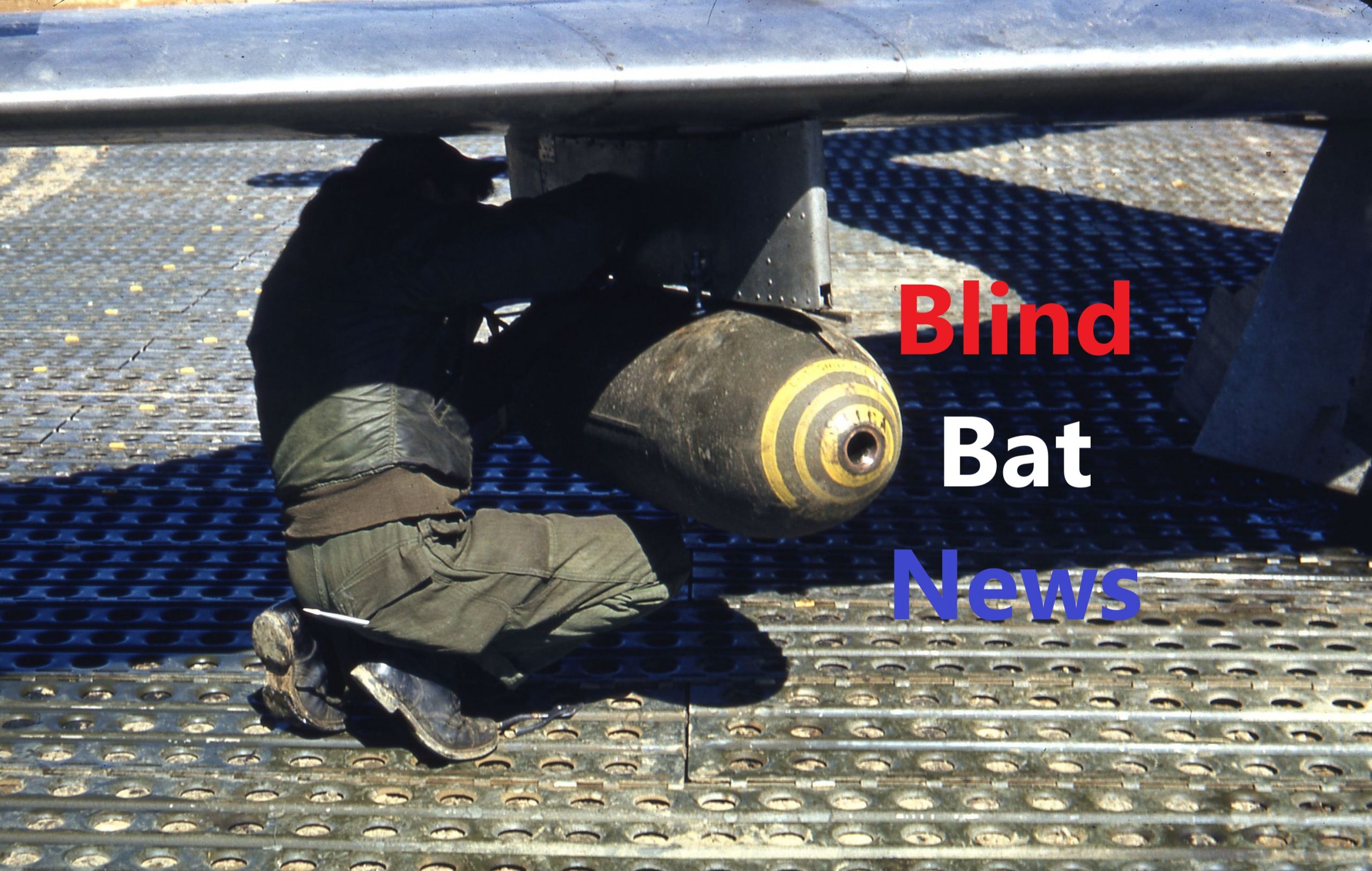 ‘Bombing-up’ your F-80 Shooting Star in Korea!
‘Bombing-up’ your F-80 Shooting Star in Korea!
